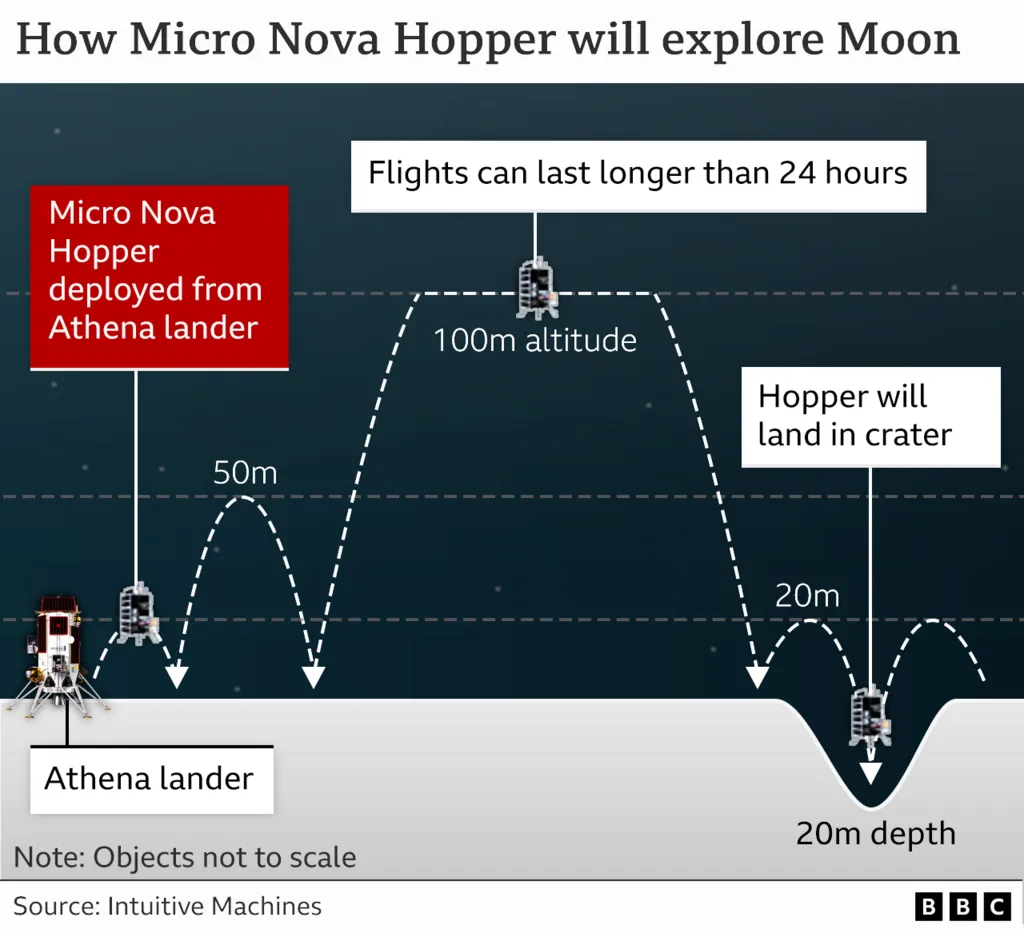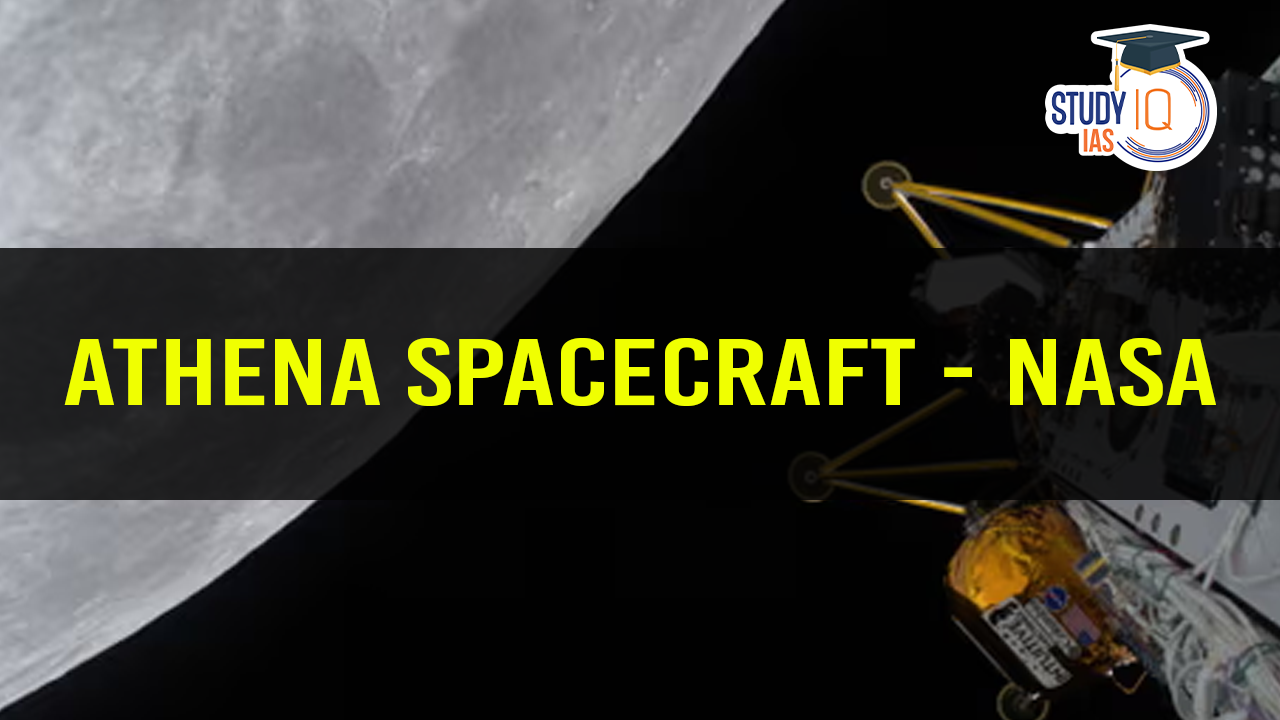Table of Contents
Context: Intuitive Machines has declared its second lunar mission, Athena, a failure after it missed its intended landing site on the Moon.
About Athena Spacecraft Lander
- It was developed by Intuitive Machines under NASA’s Commercial Lunar Payload Services (CLPS) program.
- CLPS program is designed to facilitate private sector lunar exploration.
- Location: Mons Mouton, approximately 160 km from the Moon’s South Pole—the closest landing to the South Pole ever achieved.
- NASA’s Lunar Reconnaissance Orbiter will soon capture images of Athena to determine its exact position.
Scientific Goals
- Primary Objective: Search for subsurface water ice—a crucial resource for future lunar missions.
- Conduct studies to support NASA’s Artemis program for long-term human exploration.
- Test advanced technologies that could be used for future lunar and Mars missions.
Athena Landing Failure and Mission Termination
- Athena missed its intended landing site by over 250 meters, landing sideways in a crater near the Moon’s south pole.
- The lander returned images confirming its position and activated a few experiments before losing power.
- Extreme cold and poor solar panel alignment made it unlikely to recharge, leading to mission termination.
- The Moon’s south pole is difficult to explore due to:
- Harsh sun angles affect solar power.
- Limited communication with Earth.
- Rugged, uncharted terrain.
- Athena’s landing (160 km from the South Pole) was the closest any spacecraft has reached this region.
- This was Intuitive Machines’ second lunar landing attempt:
- The first attempt (2024) also resulted in a sideways landing but remained operational for longer.
- In both Athena missions, last-minute failures in the primary laser navigation system caused problems during landing.
Scientific Instruments
Micro Nova Hopper (Grace) – A Jumping Robot
- Designed to hop across the Moon’s surface instead of rolling like traditional rovers.
- It can leap 100 meters high and travel up to 2 km (1.2 miles).
- Planned to make five jumps to land inside a permanently shadowed crater to capture the first-ever images of its interior.
- Permanently shaded areas are ideal locations for finding ice, as they remain at extremely low temperatures.

NASA’s Scientific Instruments
- Trident Drill: Designed to churn up lunar rocks and soil.
- Its goal was to determine if ice existed beneath the Moon’s surface.
- Mass Spectrometer: It will analyze gases released from the lunar surface.
- Lunar Mobile Communications Antenna (4G Technology by Nokia): Aims to establish a mobile communication network on the Moon.


 Technology and Innovation Report 2025
Technology and Innovation Report 2025
 Satellite Internet, Working and Associat...
Satellite Internet, Working and Associat...
 India’s Undersea Cable, Expansion, Sig...
India’s Undersea Cable, Expansion, Sig...





















